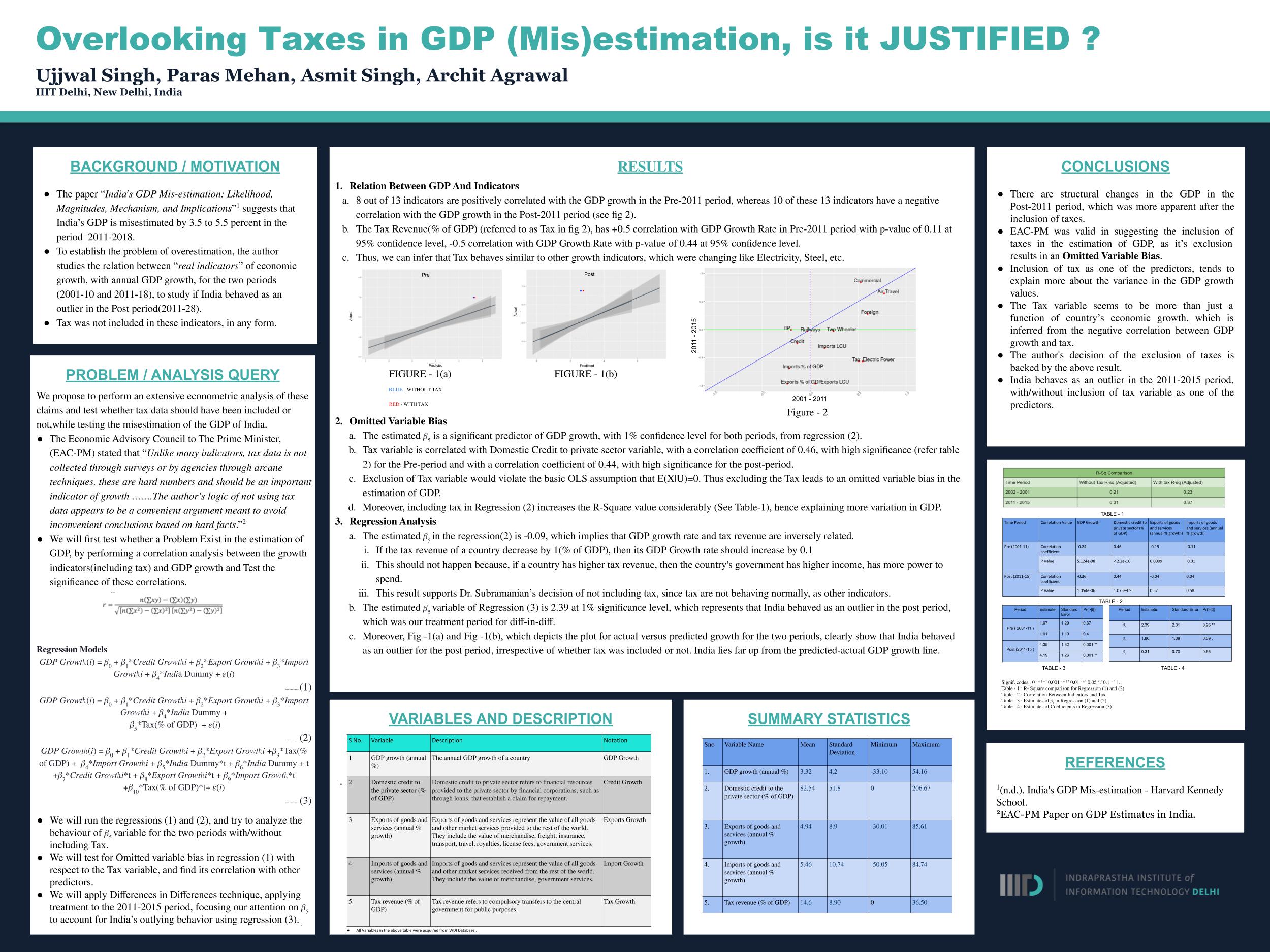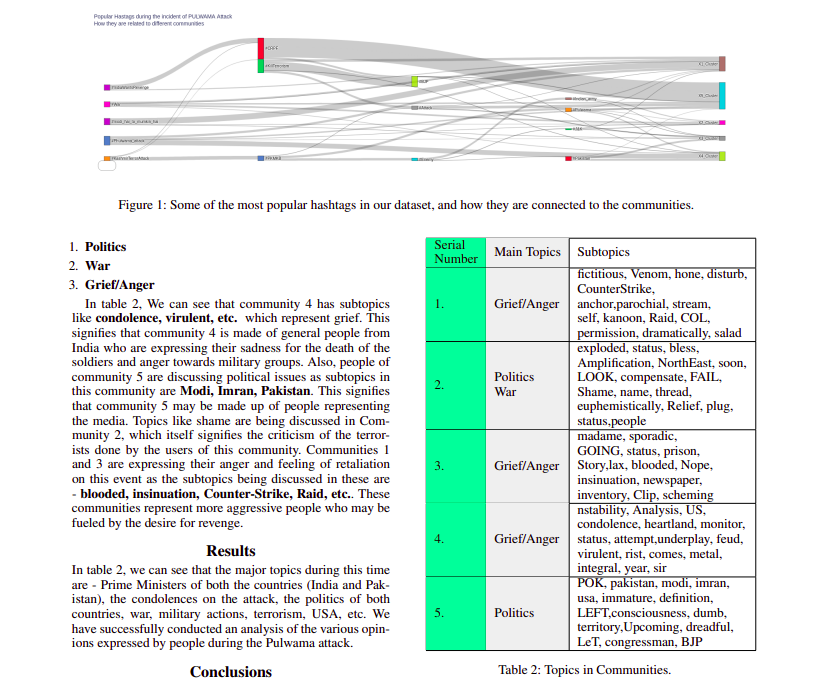Research
Indias’ GDP misestimation.
Ujjwal Singh, Paras Mehan, Asmit Singh, Archit Agarwal
2019
We propose to perform an extensive econometric analysis of these claims and test whether tax data should have been included or not included while testing the misestimation of the GDP of India. The Economic Advisory Council to the Prime Minister (EAC-PM) in its rebuttal 4 to Arvind Subramanian paper 1 stated that : “ Unlike many indicators, tax data is not collected through surveys or by agencies through arcane techniques, these are hard numbers and should be an important indicator of growth. Further, there have been no major changes in tax laws until the end period in the author’s analysis (31st March 2017). GST was introduced on 1st July 2017. The author’s logic of not using tax data appears to be a convenient argument meant to avoid inconvenient conclusions based on hard facts . ” The EAC-PM raised concerns over the fact that Arvind Subramanian didn’t include taxes in his study 1 , but as stated, taxes are “ hard numbers and should be an important indicator of growth. ” EAC-PM also argues that the tax plays an essential role in the GDP growth rate of the country, and should be considered as one of the fundamental indicators of growth of a country. Therefore, we propose to perform an extensive econometric analysis of these claims and test whether tax should have been included or not included while testing the misestimation of the GDP of India.

Towards the Digital Bacillaria
Ujjwal Singh, Dr. Bradly Alicea, Dr. Richard Gordon, Dr. Thomas Harbich, Asmit Singh, Vinay Varma
2019-20
Recent years have witnessed a convergence of data and methods that allow us to approximate the shape, size, and functional attributes of biological organisms. This is not only limited to traditional model species: given the ability to culture and visualize a specific organism, we can capture both its structural and functional attributes. We present a quantitative model for the colonial diatom Bacillaria paradoxa, an organism that presents a number of unique attributes in terms of form and function. To acquire a digital model of B. paradoxa, we extract a series of quantitative parameters from microscopy videos from both primary and secondary sources. These data are then analyzed using a variety of techniques, including two rival deep learning approaches. We provide an overview of neural networks for non-specialists as well as present a series of analysis on Bacillaria phenotype data. The application of deep learning networks allows for two analytical purposes. Application of the DeepLabv3 pre-trained model extracts phenotypic parameters describing the shape of cells constituting Bacillaria colonies. Application of a semantic model trained on nematode embryogenesis data (OpenDevoCell) provides a means to analyze masked images of potential intracellular features. We also advance the analysis of Bacillaria colony movement dynamics by using templating techniques and biomechanical analysis to better understand the movement of individual cells relative to an entire colony. The broader implications of these results are presented, with an eye towards future applications to both hypothesis-driven studies and theoretical advancements in understanding the dynamic morphology of Bacillaria.

Topic modeling on User Interactions
Ujjwal Singh, Arijit Ghosh Chowdhury, Aniket Didolkar
2019
The Pulwama attack was conducted on February 14, 2019, in the Pulwama district of Kashmir, it leftover 40 Central Reserve Police Force (CRPF) personnel dead. The attack which was almost immediately claimed by Jaish-eMohammed (JeM), a terrorist outfit based out of Pakistan. Naturally, in the aftermath of such an attack, TV channels and newspapers, as well as quotidian expressions between people, has been intense and emotionally charged discussions about the attackthe manner in which it was conducted, the role of JeM, the Pakistani state apparatus, the InterServices Intelligence (ISI), as well as the response that the Indian state should take. Twitter has been the carrier of such emotionally charged discussions. The attack has led to the expression of nationalistic and anti-nationalistic sentiment on twitter as well as expression of hate speech against religious minorities. In this paper, we conduct a topical and thematic analysis of the tweets related to the Pulwama attack.
